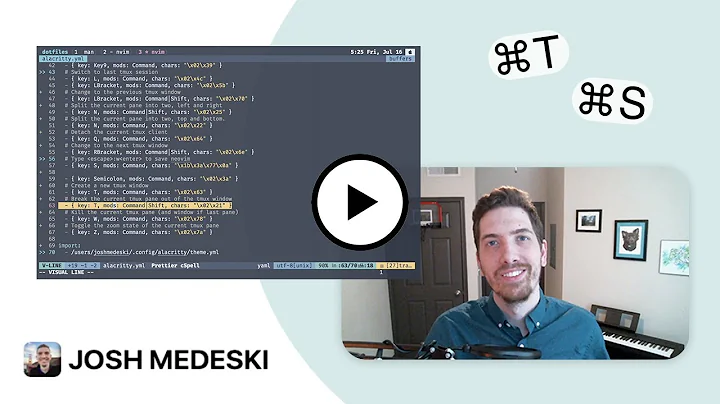Function key shortcuts in PuTTY/MinTTY and Tmux/Byobu
43
I have had a similar trouble with PuTTY and screen (I couldn't use Ctrl modifier). The solution I've found was KiTTY - the fork of PuTTY, which is better maintained (last update from 2015/06/02 22:02). My problem with Ctrl key has gone.
By default, Kitty uses Fn keys for its own shortcuts, but you can configure it other way, so Fn keypresses will be sent to your application.
Related videos on Youtube
Author by
Harlem
Updated on September 18, 2022Comments
-
Harlem over 1 year
To create a MATLAB program that simulates the operation of the system at the step input (the graphs of
v(t),e(t),u(t), andy(t)are required). I did not find any example, I do not know where to start and how to approach this requirement Some clues, please.-
Chris Johnsen over 10 yearsThe sequences you list for tmux are just the rxvt-style modified-key sequences that it recognizes. tmux also recognizes the (unmodified) sequence specified by TERM’s terminfo entry (e.g.
kf3from whatever TERM you are using when attaching to tmux) as well as the xterm-style modified-key sequences fromxterm-keys.c. So, the sequences that you report from Gnome-Terminal and MinTTY (although the escape+zeros in your sequences should be escape+letter-ohs (a.k.a. SS3) should be recognized by tmux, but it will only pass them through if you have thexterm-keysoption enabled. -
 MichaelTr7 over 3 yearsYou could derive the closed-loop gain that is equivalent to the loop and then uses the
MichaelTr7 over 3 yearsYou could derive the closed-loop gain that is equivalent to the loop and then uses thetf()function to construct your closed-loop transfer function/gain. Then find the step response by input the result oftf()into thestep()function. MATLAB documentation: Step response plot of dynamic system; step response data. -
 MichaelTr7 over 3 yearsIf you want all the graph of the other parts you might have to derive the closed loop gain relative to where you're taking the output. A way of verifying is using MATLAB's Simulink to check if you get the same results.
MichaelTr7 over 3 yearsIf you want all the graph of the other parts you might have to derive the closed loop gain relative to where you're taking the output. A way of verifying is using MATLAB's Simulink to check if you get the same results.
-





